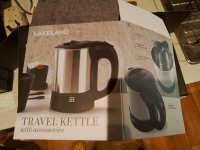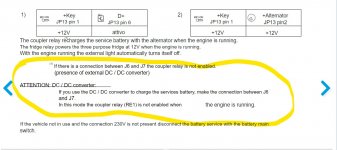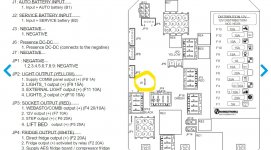Something which is not that helpful is the way NDS seem to use the same model number for quite different products, and so when comparing what would seem to be just iterations of the same unit you see very different information.
I was searching for some information on the system (the box they refer to as a
shunt) and for the same part number (the bit in front of the "-" anyway), I found a manual with a totally different order of fuses and jumpers.
So I am very wary about looking at one system and using it as a basis of how another could be set by altering jumpers, etc. They appear to use the bit AFTER the dash as a major model type which is, at least to me, odd and confusing.
Merl, bear in mind also that unlike in yours, in Bills case we did not really ADD a B2B. There was already a factory-fit B2B installed.
So you have make the assumption that the settings were correct for the supplied configuration as a starting point and was setup to work with a B2B installed. Otherwise where do you go? Believe nothing and rebuild the whole motorhome?
Quite simply the fitted B2B had gone bad with some kind of internal fault and was dead. This was nothing to do with the settings, it was an internal fail (and when put on the bench on its own, same fault - direct short from IN to GND causing protective
fuse to immediately blow). The new B2B was not really an ADDITION, but a replacement. Key difference here I think.
Old B2B had 3 cables ... IN, OUT & GND.
New B2B had 3 cables... Now moving over 3 cables from old to the new should not make one iota of difference to the configuration. There should be no need to start moving jumpers to enable or disable stuff unless you think Rapido cannot build their motorhomes correctly? Which would be a disappointing situation.
As far as the
Victron B2B is concerned, it has a specific "Smart Alternator" setting and a particular operating algorithm for this. So again, you have to take some credence of the research and development a company makes, especially one like
Victron, into their product and trust they have a pretty good idea what they are doing. They won't be infallible by any means, but a bit of credit due I think?
As it happens, Bill has essentially confirmed multiple times in our conversations that without an operating B2B (be it either the failed original, or the new one disabled), that there is no charging of the batteries. He has the luxury due to the devices fitted to see the starter
battery value on the B2B app; the leisure
battery voltage on three different apps; plus the actual current into the batteries on another App, so a good level of info.




